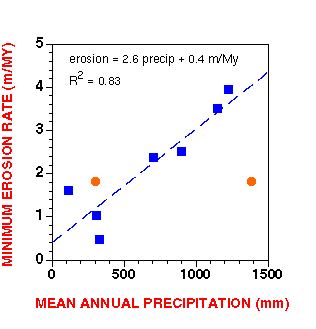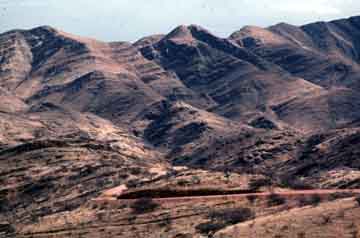
Bare rock surfaces -- isolated and alone -- are a common, even dominant feature of deserts throughout the world.
Over a century of research has provided a plethora of hypotheses regarding the ages of and means by which these rock outcrops, termed inselbergs, form. However, until recently there were no means by which to test these hypotheses nor to measure the rate at which inselbergs are eroding.
Over the past several years, we have been collecting samples of granitic rock and, in collaboration with physicists, have used accelerator mass spectrometry to measure the abundance of very rare isotopes formed by the bombardment of cosmic rays.
These measurements, from seven sites in Australia and North America, have allowed us to define a relationship between rainfall and the rate at which exposed rock erodes. This relationship suggests that rock, in the absence of measurable precipitation, should erode only 40 cm every million years, an amazing slow rate. The rate of rock erosion should increase 2.6 m/My for each additional meter of precipitation.

Until now, we have not sampled extremely arid sites. This project involved collection of samples from the hyperarid Namibian desert in order to test the relationship we have established and to determine the rate of rock weathering and landscape formation in what is thought to be one of the World's driest and most tectonically stable areas.

We also collected sediments from Namibian Rivers in order to determine the rate at which the Great Escarpment was retreating.
| UVM Cosmogenic Lab | ||